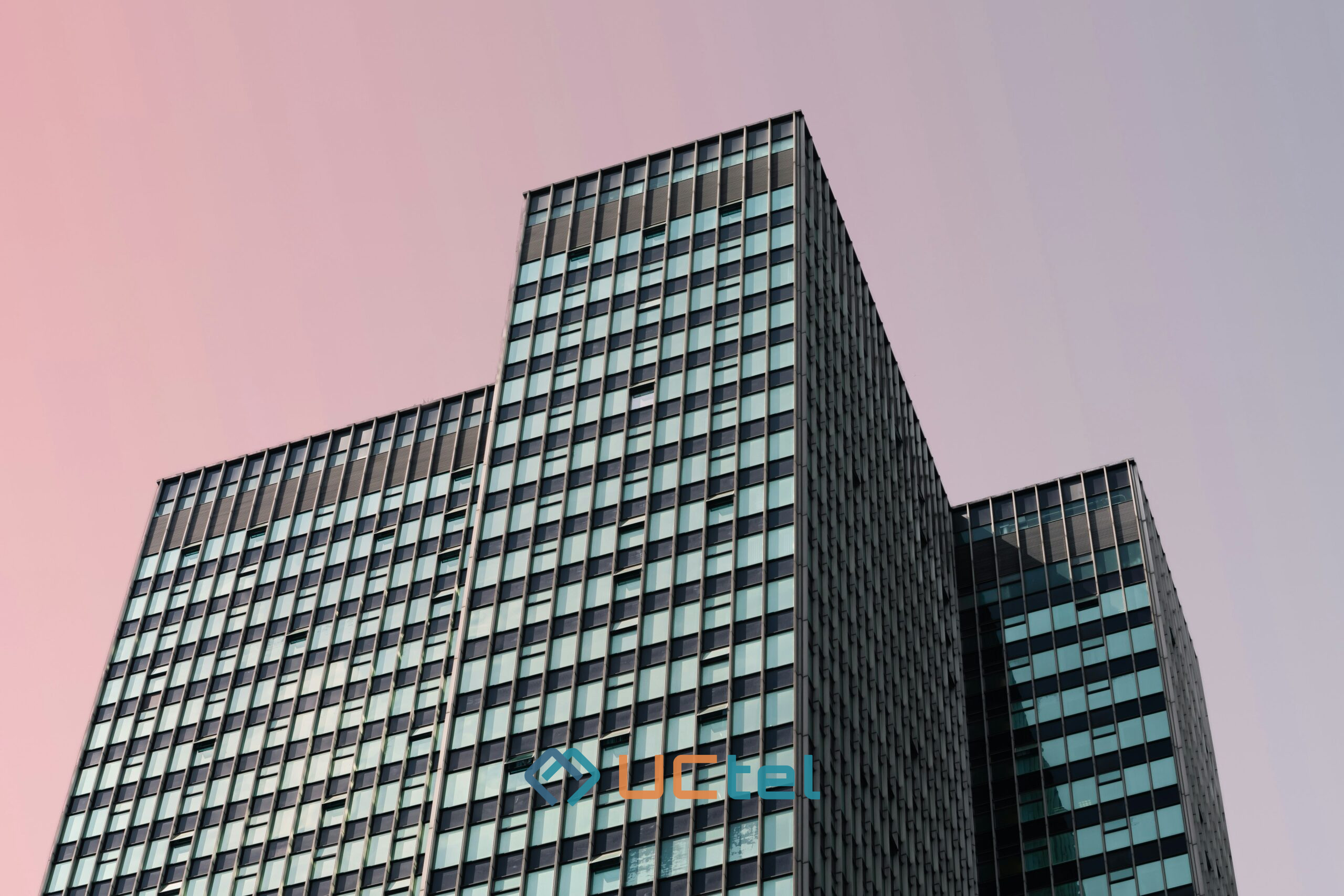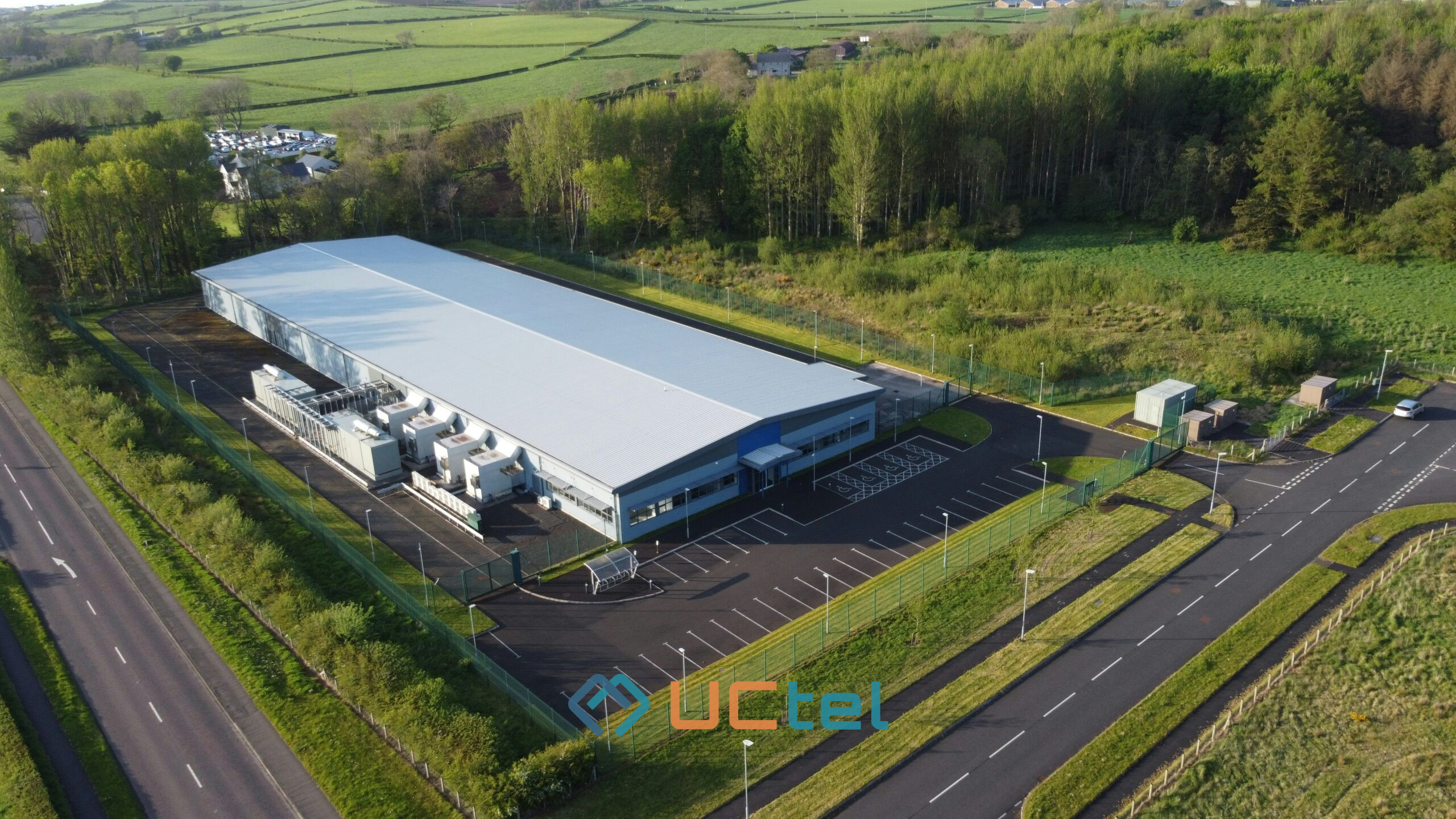3G vs 4G vs 5G: All the Differences

Table of contents
- 1. What is 3G?
- 2. What’s the Difference Between 3G and 4G?
- 3. What’s the Difference Between 4G and 5G?
- 4. What is the Difference Between 3G and 5G?
- 5. 3G vs 4G vs 5G Full Comparison
- 6. What Difference Does 3G, 4G, and 5G Make for Your Business?
- 7. Which Network Will Be the Most Cost-Effective for Your Business?
- 8. UCtel Can Help Improve Your Mobile Connection on Any Type of Network
- 9. So, What’s the Difference Between 3G, 4G, and 5G?
Is your mobile network holding you back? Do you actually need the newest 5G network? If your internet feels slow or your videos keep buffering, it might not be your phone — it could be your network. Mobile technology has evolved through generations — 3G, 4G, and 5G — each bringing faster speeds and better performance. But what sets them apart, and do you really need to upgrade?
Helping businesses solve communication challenges since 2011, we at UCtel understand the intricate difference between 3G, 4G, and 5G, as well as the opportunities that advancements in communication technology bring. We provide legal and guaranteed solutions to connectivity issues and already helped various companies and individuals in the UK to stay connected with fast, reliable networks. Based on our own expertise, this guide outlines each existing standard and explains the main 3G/4G/5G differences to show what it means for you and your business perspectives.
What is 3G?
3G networks are the longest-living communication standard that has become synonymous with “mobile internet” for many. To make and receive calls and access mobile internet, your phone uses signals passed between cell towers via a network managed by your provider.
An evolution of the previous 2G technology, 3G brought unprecedented top speed of data transmission, access to multimedia services, and seamless roaming. The third-generation tech also ensured a more efficient use of channel resources and an increase in the operating frequency range (400 MHz–3 GHz). This enabled providers to offer better-quality services to a larger number of subscribers. The main standing-out features and characteristics of the standard included:
- Speed of up to 2 Mbps
- Increased bandwidth and data transfer rates
- An ability to send/receive large email messages
- Large capacities and broadband capabilities
However, today, the standard is being slowly but steadily stamped out by the fourth and fifth generations.
What’s the Difference Between 3G and 4G?
4G has become the next-generation standard for UK mobile networks. These IP-based networks were developed in 2000 and have been introduced in many countries since 2010. The key difference between 3G and 4G is that the new technology is about three times faster than 3G and can support many more users. That is why all major UK telecom operators immediately adopted 4G.
What is the difference between 3G and 4G? Mostly, the speed. But some others worth mentioning include:
- The 3G network does not allow watching high-quality movies and videos, which is easy to do with 4G.
- 3G has data rate limits, while the 4G network provides high-speed web connection to any user.
- Another meaningful 3G and 4G difference is that many online services simply fail to run correctly within 3G, which is not an issue for the fourth generation.
The transition from a 3G network to 4G heralded higher, more reliable, and optimised data transfers. 4G allowed people to stream movies and songs, make video calls, and play online computer games without experiencing lag. It also enabled users to use their mobile phones as an efficient personal hotspot for their laptops or other devices while out and about.
What’s the Difference Between 4G and 5G?
5G is the fifth-generation technology standard for mobile networks set to deliver even higher multi-Gbps peak data speeds, ultra-low latency, more reliability, and higher bandwidth than 4G. Another difference between 4G and 5G is that the latter is an improved standard of the former, implying the same combination of technologies and full “backward compatibility” with 4G infrastructures. In the UK, 5G coverage has been available in major cities since 2019.
One of the main differences between 4G and 5G is the transmission speed: 5G is about 20 times faster than 4G. The new standard also allows serving many more client devices, reaching up to a million customers in an area of 1 km².
5G operates in a different radio frequency band than 4G, which allows for revolutionary improvements in network performance. While 4G operates at frequencies lower than 6 GHz, the 5G standard uses frequencies in the 30–300 GHz range.To put it in perspective, the difference between 5G and 4G matters a lot when it comes to the large-scale functioning of the Internet of Things (IoT). 5G connects various devices to the web (from self-driving cars to "smart" electric kettles), introduces remote control of vehicles, and streamlines operations in medicine, industry, science, technology, and all other areas without exception.
What is the Difference Between 3G and 5G?
As opposed to the third generation, 5G is designed to provide much higher data rates and lower latency. Whereas 3G offers data speeds ranging from around 200 Kbps to 2 Mbps, 5G boasts 1 Gbps to 10 Gbps speeds and beyond.
In terms of latency, 3G primarily operates in frequency bands below 3 GHz, which grants better coverage but limited data capacity. 5G uses a wider range of frequency bands, including both sub-6 GHz frequencies for broader coverage and mmWave (millimetre wave) frequencies above 24 GHz for ultra-high data rates. The use of mmWave allows for massive data transmission but requires more cell sites due to its shorter range.
The biggest difference between 3G and 5G, however, is that providers are gradually abandoning 3G, while 5G is the latest focus for adoption.
3G vs 4G vs 5G Full Comparison
How do 3G, 4G, and 5G compare in the most basic characteristics? See the difference between 3G and 4G and 5G by their major aspects in our table.
| Feature | 3G | 4G | 5G |
|---|---|---|---|
| Introduced | 2001 | 2009 | 2018 |
| Technology | WCDMA | LTE, WiMAX | MIMO, mm Waves |
| Access system | CDMA | CDMA | OFDM, BDMA |
| Switching type | Packet switching, except for air interference | Packet switching | Packet switching |
| Internet service | Broadband | Ultra-broadband | Wireless World Wide Web |
| Bandwidth | 25 MHz | 100 MHz | 30–300 GHz |
| Speed | up to 2 Mbps | up to 100 Mbps | up to 10 Gbps |
| Latency | 100–500 ms | 30–50 ms | as low as 1 ms |
| Data capacity | Limited | Much higher than 3G | Extremely high, supports IoT and massive connections |
| Best for | Web browsing, emails, basic apps | Streaming, video calls, gaming | Smart cities, AR/VR, real-time applications |
| Cost for users | Cheaper, but slow | Standard for most users | Generally higher costs for early adopters |
| Key advantage | High security, global roaming | Speed, reliable connections | Ultra-fast, low-latency, supports millions of devices |
The comparison of LTE vs 4G technology may also show you how advancements in connectivity have revolutionised data transmission speeds for mobile devices. And while a table gives a quick snapshot of the 3G, 4G, 5G difference, there are other factors to keep in mind when choosing the right network for your needs.
Device compatibility
Not all devices support 4G or 5G, and upgrading might be necessary if you're still using older models. Most modern smartphones come with 4G as standard and are 5G-ready. So, if you want to take advantage of 5G speeds, you need a compatible device that will seamlessly switch between 4G and 5G networks.
Data efficiency
One of 5G’s biggest benefits is its ability to handle huge amounts of data. 5G networks are designed to accommodate millions of devices per square kilometre, ensuring better speeds and lower congestion, even in crowded areas like stadiums, airports, and city centres.
Impact on battery life and device performance
3G networks weren’t very power-efficient, but phones had simpler features that didn’t drain batteries as quickly. 4G improved efficiency, but streaming, gaming, and constant data use lead to higher battery consumption. 5G is designed to be more power-efficient in the long run, but early 5G devices may use more battery, especially when switching between networks.
Security and reliability
Each generation improves security features, with 5G offering the best protection yet. It uses advanced encryption and authentication methods to prevent cyberattacks and hacking attempts, which makes it ideal for industries like finance, healthcare, and smart infrastructure, where security is critical.
What Difference Does 3G, 4G, and 5G Make for Your Business?
All in all, there are a bunch of underlying differences in terms of business and commercial use of each standard. So what does 3G, 4G, 5G mean for your particular corporate ambitions? Let’s take a look.
Data requirements, speed, and capacity
- 3G networks offer lower data speeds compared to newer standards. They are suitable for basic tasks like email, web browsing, and text messaging.
- 4G networks provide significantly higher data speeds, enabling smoother video streaming, conferencing, and data-intensive applications. This allows businesses to efficiently access cloud services, collaborate in real-time, and engage in multimedia interactions.
- 5G networks are designed to deliver ultra-fast speeds and higher data capacity. This is essential for supporting emerging technologies like AR, VR, IoT devices, and real-time analytics, which can greatly enhance business operations and customer experiences.
Latency
- 3G networks have higher latency, meaning there's a delay between sending a request and receiving a response. This can impact real-time communication and applications.
- 4G networks have lower latency compared to 3G, making them better suited for applications requiring near real-time responsiveness, such as online gaming and video conferencing.
- 5G networks offer ultra-low latency, which is critical for applications like autonomous vehicles, remote surgery, and industrial automation. This can enable new business models and drive innovation in various industries.
Connectivity and coverage
- 3G coverage is widespread in many areas but might not be as reliable in remote or densely populated locations.
- 4G networks provide better coverage and connectivity in urban and suburban areas, enabling businesses to stay connected at all times.
- While 5G coverage is still expanding, it's initially concentrated in urban centres and tech hubs. It offers high-speed, low-latency connectivity for businesses operating in such areas.
Ultimately, the choice between 3G, 4G, and 5G should align with your business goals and operational needs.
Which Network Will Be the Most Cost-Effective for Your Business?
Your business’s final choice of communication standard depends on several factors, including your specific requirements, budget, location, and future growth plans. Each generation of technology offers different capabilities, speeds, and coverage, so it's important to evaluate your needs and choose accordingly. Here's some advice on when to consider each standard.
When to choose 3G
- Basic communication: If your business requires simple voice and text communication, such as sending emails, making calls, and sending SMS messages, 3G could still be a viable option in areas with limited network infrastructure.
- Low data requirements: If your data usage is minimal, such as checking emails and light web browsing, 3G might suffice.
- Budget constraints: If you're on a tight budget and don't require high-speed data, 3G services are generally more affordable than newer standards.
Note: As most carriers are expected to completely switch off 3G by the end of 2025, this solution will be temporary. You will need to upgrade anyway in less than a year.
When to choose 4G
- Moderate data usage: For businesses that rely on moderate to high data usage, 4G offers significantly faster speeds than 3G. It works best for video conferencing, streaming, and downloading/uploading files.
- Reliable connectivity: 4G networks are more reliable and provide better coverage than 3G networks, making them a suitable choice for businesses operating in urban and suburban areas.
- Future-proofing: While 4G is not the latest technology, it still provides good performance and is widely available. If you want a balance between performance and cost-effectiveness, 4G would be a suitable choice.
When to choose 5G
- High data demand: If your business heavily relies on data-intensive tasks, such as real-time analytics, 4K video streaming, IoT devices, and large file transfers, 5G's ultra-fast speeds and low latency are a major advantage.
- Emerging technologies: If you plan to adopt emerging technologies like augmented reality (AR), virtual reality (VR), or edge computing, 5G's low latency and high bandwidth are crucial for seamless experiences.
- Urban areas and tech hubs: 5G deployment is initially concentrated in urban areas and tech hubs. 5G could provide a competitive edge if your business operates in such locations.
- Long-term investment: While 5G may require a higher initial investment due to the need for new devices and infrastructure, it offers future-proofing as it becomes more widely available and integrated into various sectors.
You can use the above as your detailed reference sheet for picking exactly what you need and avoid overpaying or falling into the trap of adopting the tech you are unable to manage.
UCtel Can Help Improve Your Mobile Connection on Any Type of Network
Struggling with dropped calls, slow mobile internet, or a patchy signal at home or work? Weak mobile reception is a common issue, whether you're using 3G, 4G, or even 5G. At UCtel, we specialise in enhancing mobile connectivity for businesses, ensuring they get strong, stable, and fast mobile connectivity wherever they require it. Whether you deal with poor coverage in a rural area, large office building, or distant industrial sites, we can help.
At the core of our solutions are Ofcom-compliant mobile phone signal boosters from CEL-FI. Easy to install, versatile, and authorised by 200 carriers globally, they are suitable for all kinds of buildings — hospitals, warehouses, hotels, offices, retail units, and so on. Best of all, it’s fully compatible with 3G, 4G, and 5G networks, giving staff and visitors the best possible experience.
Although there is a massive difference between standards and carriers, no matter your mobile network operator, we always have an efficient custom solution for you.
So, What’s the Difference Between 3G, 4G, and 5G?
We've taken a deep dive into 3G, 4G, and 5G, exploring their speeds, capabilities, and how they impact your everyday mobile experience. But what is the difference between 3G, 4G, and 5G for you?
Basically, each generation of mobile technology is based on the previous one, making connectivity faster, more efficient, and more reliable:
- 3G was the first step into mobile internet, but it is now largely outdated.
- 4G changed the game with high-speed browsing, HD streaming, and smooth video calls, and it’s still the most widely used network today.
- 5G is the future, offering blazing-fast speeds, near-instant response times, and support for smart tech, IoT devices, and high-end automation.
Need help making the final choice? Our friendly team at UCtel will guide and assist you. We offer innovative solutions for each client, transform the digital infrastructure of businesses, and move global enterprises into the digital age. UCtel connects people, networks, clouds, and apps with next-generation technologies. Contact us by emailing us at sales@uctel.co.uk or call us at 0333-344-4417.







